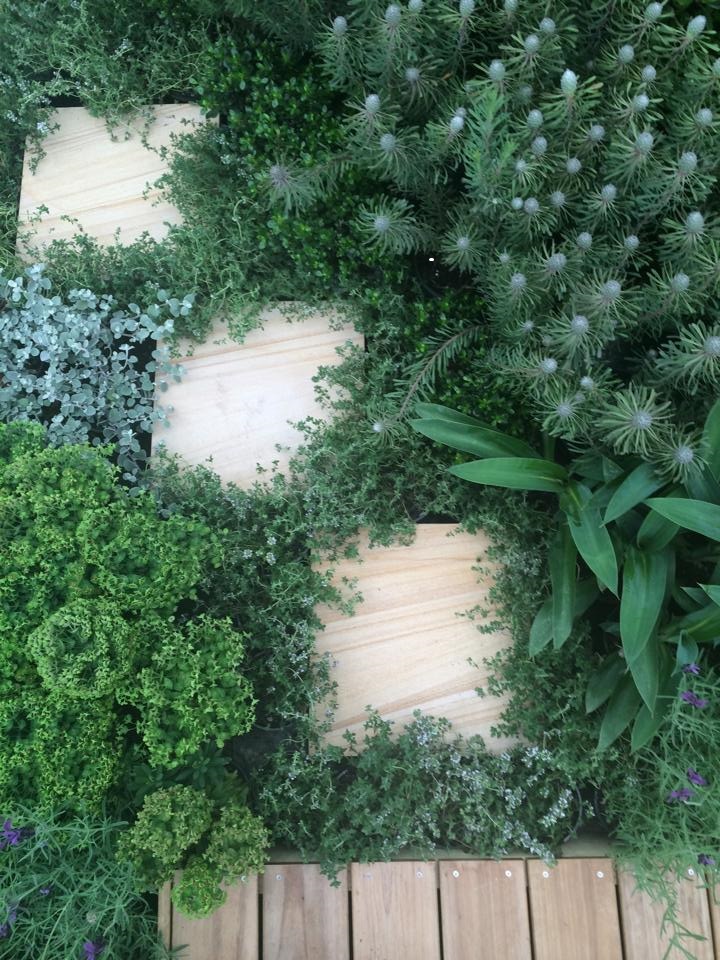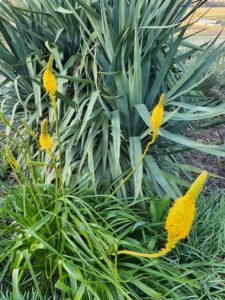
01 Sep Creating a Garden to Attract Wildlife
In the last ten years of gardening at the Berkshires we have noticed a significant increase in the number of birds around the garden. When we were creating the garden we were coming out of a ten years of drought. Around the old house some ornamental planting had remained but mostly the garden had been given way to cropping and grazing. When we were designing the new house and garden we tried to ensure all the remaining trees left in the paddock were maintained around the house. We also took into consideration, required set backs from the established trees so root systems weren’t damaged in anyway. At the beginning these established trees were all that we had as far as vegetation coverage or wildlife habitat goes. Over time, as the garden developed, different layers of vegetation started to develop. This I feel has been one of the key ways we have managed to attract birds and other wildlife back to the garden.
Recently I was reading through the book “One of These Days, Springview Remembered” written by Charlie Robinson (a fourth generation descendant of the first farmers on this land). This book was written when the Berkshires was part of a much larger property called Spring View in the 1990’s . The owner, Charlie Robinson notes in his writings that in the 1920’s – “There were a lot of Kookaburras about then, probably because there were plenty of hollow trees for nesting. Today these beautiful birds have become quite rare”.
Part of this reasoning I guess is that many of the trees around the area that would have formed hollows would probably have been cleared for farm land. Now with a more total management goal and adherence to regulations these trees are remaining. In turn we are now starting to see more Kookaburras in the garden, along with Black Cockatoos, Crimson Rozella, Barn Owls, Book Book Owls, Rainbow Lorikeets, Magpies, Superb Parrots, Eastern Rozella, Sulphur Crested Cockatoos, Galahs and King Parrots. With the denser plantings of vegetation, many layers of planting and a variety of species we have also seen many more smaller birds like Blue Wrens, Robins, Butcher Birds and Willy Wagtails.
Key Ways to Attract Wildlife
Some key ways to attract birds and other wildlife to your garden you will need to provide *Habitat space
*A body or source of water
*A form of shelter
*A place for breeding
*Food – including nectar and pollen
Wildlife can be anything from bees, dragon flies, butterflies through to possums, lizards and bats. Ideally your garden does to a certain extent need to emulate native bushland – this could mean open tall forest, heathland, grassland or even rain forest. The most common factors found amongst these vegetation types as previously mentioned there is more than one layer of vegetation, there would be a range of species not just one species and none of these vegetation types look neat and tidy.

Create Layers of Habitat
The first aim to think about is how you can create the different layers or storeys of vegetation. The taller layer may be made up by taller trees and their canopies, the next layer down could be smaller trees and tall shrubs, then you may have a layer of shrubs, then a layer of ground covers and the last lowest layer (which may be the most important layer) could be the leaf litter layer made up of dead leaves, fallen logs, rocks and twigs. This layer is important as it will provide habitat for the soil’s microorganisms, earthworms and microscopic decomposers like fungi and bacteria. To maintain this lower layer you don’t want to go around and sweep up all the fallen debris constantly. You will need the garden to have a bit of a messy edge not a sterile crisp finish. This natural look I feel can be quite appealing and frankly the less use of a leaf blowers in the garden the better. For safe access throughout the space you can have clear and clean pathways still just allowing the garden spaces to have a more natural look.
Plant Selection
When selecting plants think about using a wide range of species focusing on those species indigenous to your local area. That is not to say don’t use some exotics. It is most important to have a range of species planted in the garden so that biodiversity is increased. You do not want to have a garden made from one species where you have created a monoculture which in turn will not provide the habitat for a range of species and create the eco system you desire.
Considering the flowering times of your plants is important as you need to ensure the flowering times are distributed throughout all the seasons. Flowers will provide nectar and pollen as food for birds and pollinating insects. This food needs to be available to them throughout the year. It is a good idea to allow some of the flowers to go to seed as other animals will eat the seeds as they form from those plants. Less dead heading of the flowering plants is good for a wildlife friendly garden


Water Source
Adding some form of shallow water to your garden space is important not just for animals to drink from but some animals like birds will bath in the water for cleaning themselves. Others like frogs will take shelter in the water and breed in water. Water could be as simple as a bird bath or rock which is carved out to hold a pool of water.
Shelter
Giving shelter to some animals might mean providing nest boxes in trees for them to create a home in or you could even make a Bee “B and B” or an insect hotel. With less mature trees being maintained in our residential area there is therefore less hollows forming that would have provided habitat for many of Australia’s Bird species and other arboreal animals.
Things to avoid
To ensure wildlife do use your garden try to control the amount of weeds throughout the garden spaces. Try to ensure any pets you own or neighbouring pets are either kept out of the garden or wear bells to warn native species of them approaching.
Also try to limit the use of any chemicals within your garden. Look for natural alternatives if you need to treat a pest or disease.
If you can attract more wildlife to your garden not only will you get to enjoy observing their lives and antics but you will find they will enhance your outdoor experience.



